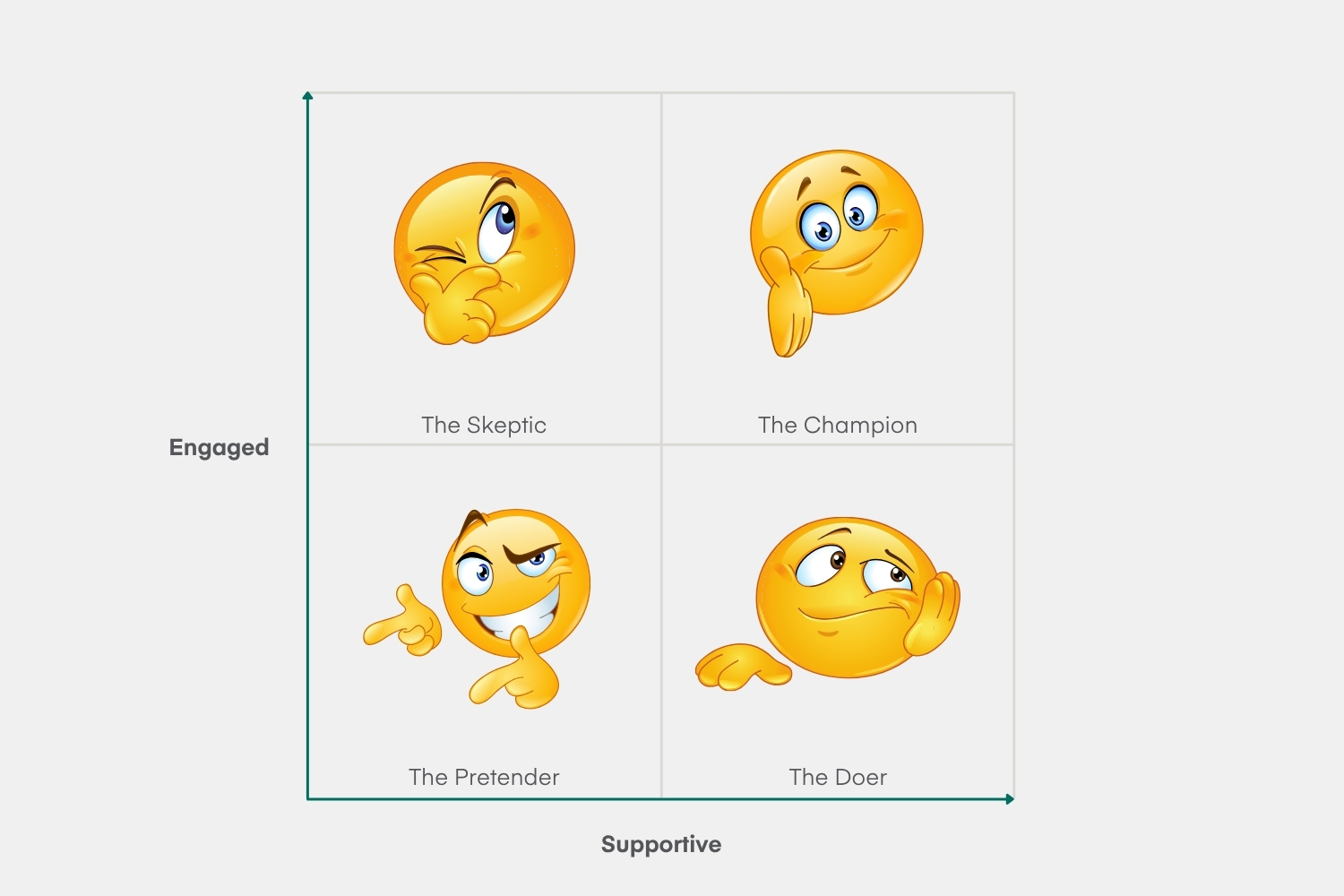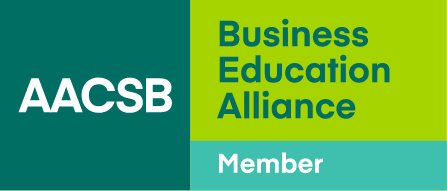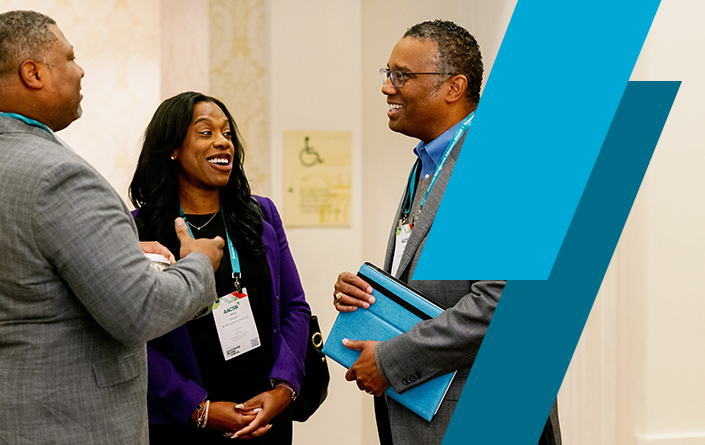Co-Creating the Accreditation Journey With Faculty
Business schools often underestimate how deeply faculty influence accreditation. Yet success depends on faculty’s daily decisions and contributions.
- The success of AACSB accreditation depends in large part on how well schools engage faculty, whose diverse behaviors and circumstances can make or break the process.
- Our framework for faculty engagement identifies four archetypes: Champions, Doers, Skeptics, and Pretenders. Involving these archetypes in the accreditation process starts with understanding their motivations and the pressures they face.
- Tailored strategies that respect each archetype’s strengths and challenges foster collaboration, prevent burnout, and turn accreditation into a shared journey of continuous improvement.
The pursuit of AACSB accreditation represents one of a school’s most significant strategic undertakings. Aligning with the nine AACSB standards empowers institutions to compete in the global market, live their missions, and continuously improve how they deliver desired positive impact.
However, business schools often make one simple, yet costly, mistake: They assume pursuing accreditation is a back-office endeavor. They overlook the fact that the involvement, commitment, and collaboration of all faculty is essential to achieving accreditation, particularly for schools operating with small staffs and tight resources.
It’s equally crucial that school leaders recognize that different faculty members bring diverse perspectives and varying levels of enthusiasm to the accreditation process. By developing targeted strategies to encourage widespread faculty participation, business schools can energize their academic communities to achieve and maintain accreditation standards.
The two of us direct the accreditation efforts at our respective schools. In these roles, we have discovered patterns in how faculty view the accreditation process, as well as strategies for maximizing their participation. In November 2024, we presented a session on this topic at AACSB’s Europe, Middle East, and Africa Conference in Malta. Here, we share our session’s actionable insights about how to engage diverse faculty in a school’s efforts to achieve and maintain accreditation.
Typology of Faculty Engagement
When it comes to accreditation-related initiatives, patterns emerge in how faculty respond to new expectations, procedural changes, and requests to lead or serve on committees and projects. To shed light on these patterns, we have created a framework that categorizes faculty across four major archetypes: Champions, Doers, Skeptics, and Pretenders.
Each archetype exhibits behaviors across two dimensions. First, we consider the level of support faculty demonstrate in implementing accreditation-related initiatives. Second, we examine the degree of engagement faculty exhibit to reflect on the work of aligning with standards and examine the value and effectiveness of new initiatives.

Each archetype can be identified according to different behaviors and actions:
Champions (high support, high engagement). As the ideal faculty archetype, Champions provide whole-hearted support for the work and willingly engage in implementing new processes and initiatives. They embrace the strategic value of AACSB standards and recognize when change is needed. They also act as advocates for new initiatives and often oversee new processes, chair committees, innovate curricula, and lead stakeholder outreach efforts.
Doers (high support, low engagement). These individuals typically adopt a passive stance, neither actively challenging new work nor enthusiastically volunteering for or initiating projects. Doers are willing to participate as needed but await direction; they thrive under clear guidance and contribute best with structured processes and visible support mechanisms.
Skeptics (low support, high engagement). Skeptics question the value, scope, and relevance of accreditation activities. They instinctively challenge resource allocation decisions and the value and practicality of new processes. Skeptics raise questions that others hesitate to ask and provide constructive criticism and insights that contribute to long-term success. While their reactions can be perceived as resistance, their input can improve decision-making and keep groupthink in check.
Pretenders (low support, low engagement). These faculty can be the biggest leadership challenge. Pretenders recognize the importance of accreditation and rarely openly object to the work, but they tend to avoid participating in the process. When Pretenders are in leadership roles, they may verbally endorse accreditation goals but fail to follow through with substantive leadership or meaningful contributions to improvement initiatives.
The more school leadership understands these four archetypes, the more they will be empowered to assess their school’s faculty dynamics. With that knowledge, they can craft targeted strategies that reflect the diverse motivations, concerns, and strengths across their academic communities.
How Prevalent Is Each Archetype?
During our conference session, we conducted a poll in which we asked the more than 100 attendees to rank the prevalence of each faculty archetype at their schools, from most to fewest. As a group, attendees ranked the proportion of archetypes at their schools in this order: Doers, Skeptics, Pretenders, and Champions.
In other words, most business school faculty can be characterized as either Doers or Skeptics. The portion of Pretenders is smaller, but significant and potentially challenging. Champions are clearly in short supply.
Schools need Champions to initiate new projects, Doers to carry the work forward, and Skeptics to keep quality high. Their goal should be to have as few Pretenders as possible.
When faculty are unevenly distributed across the four types, schools might find that the allocation of resources is ineffective and the accreditation process is being undermined. For instance, if there are too few Champions to take on the bulk of the work, these faculty risk burnout. Too many Skeptics can be a sign of poor planning and communication, while too many Doers might hinder the innovation necessary for meaningful value-added improvement. Too many Pretenders, particularly in leadership positions, can undermine genuine progress.
Schools need to maintain a balanced, rotating mix of the four archetypes: Champions to initiate new projects across the school, Doers to carry the work forward and deliver improvements on the ground, and Skeptics to keep quality high and ensure efficiency. The goal is to have as few Pretenders as possible.
That said, we do not recommend that administrators attempt to formally identify or communicate these archetypes to faculty—that would likely be unproductive, especially because faculty can move between archetypes as their workloads, priorities, and work pressures change. The better approach is to use this framework as a guide to recognize patterns of behavior and respond to those behaviors in ways that help build trust and keep faculty contributions equitable.
Strategies That Improve Engagement
Business schools will strengthen their accreditation efforts if they tailor strategies to the different motivations, constraints, and levels of commitment of each faculty archetype. Better yet, they can adopt strategies designed to nudge individuals into more productive categories. Here are a few approaches to consider:
Leverage Champions without overburdening them. Preserve Champions’ energy and passion by strategically deploying their talents, rotating leadership responsibilities, sharing recognition, and providing teaching relief and administrative support. Work to foster a collaborative culture where continuous improvement and innovation are everyone’s responsibility.
Commit to transparency for Skeptics. Instead of seeking their compliance, invite Skeptics to participate as partners in the accreditation journey. Have candid conversations that acknowledge the challenges of and the rationale behind accreditation. Ensure that formal mechanisms exist for feedback and critical reflection, which can affirm the validity of Skeptics’ concerns and foster mutual understanding. Finally, regularly share tangible outcomes and improvements driven by accreditation efforts. These actions can shift Skeptics’ perspectives from wary observation to constructive collaboration.
Offer clear structure to Doers. Engage Doers through direct invitations and guidance rather than general appeals for involvement. Assign tasks, provide instructions, set deadlines, and offer templates and checklists. In addition, consider developing tiered systems of involvement that allow Doers to start with manageable, low-commitment roles so that they can build their experience and confidence before moving on to more substantial responsibilities.
If their efforts are meaningfully recognized and they see opportunities that align with their interests, Doers can transition into Champions.
Offer comprehensive orientation materials, targeted training sessions, and peer support networks to address obstacles Doers face, such as uncertainty around expectations or limited familiarity with accreditation standards. These steps enable Doers to participate confidently and productively, especially in processes related to assurance of learning and faculty sufficiency.
Finally, recognize and celebrate Doers’ early-stage contributions, such as successful participation in committees, to reinforce their value and motivate deeper involvement over time. If their efforts are meaningfully recognized and they see opportunities that align with their interests, Doers can transition into Champions.
Assign meaningful, time-limited, targeted tasks to Pretenders. Be transparent about expectations and tailor assigned tasks to their individual strengths and interests. When Pretenders are provided clear, targeted assignments, their perspectives can shift from mere surface-level endorsement of accreditation to active participation.
Pair faculty thoughtfully. When Champions and Doers work on the same projects, Champions bring energy, experience, and a sense of purpose that can help Doers develop confidence and structure and become Champions. Similarly, Champions can provide direction to Skeptics, who in turn bring a healthy challenge to the proceedings.
Other pairings, however, are riskier. Pairing Champions and Doers with Pretenders might seem like a good way to balance Pretenders’ lack of engagement. But if Pretenders do not do their share of the work, Champions might feel overwhelmed and Doers might lose momentum. These pairings work only if Pretenders show a genuine interest in change.
| Engagement Recommendations | ||
| Archetype | Core Strategies | Ways to Optimize Engagement |
|
Champions (Believe in the value of accreditation and lead the process with energy) |
|
|
|
Doers (Are generally positive about accreditation but don’t feel ready to lead) |
|
|
|
Skeptics (Care about aligning initiatives to the standards but are uncertain that the work is worth the effort) |
|
|
|
Pretenders (Offer verbal support but rarely follow up with action or genuine buy-in) |
|
|
Two last points to keep in mind: First, regardless of archetype, faculty rarely receive the same recognition for their service-based work as they do for their teaching or research. Offering incentives can lead some faculty to accept service-based assignments solely because of the incentives, not because they see value in the work. As a result, their participation can be reactive and short-lived.
Second, if Pretenders remain disengaged, it’s sometimes better to reconsider their role in the accreditation process than it is to push them to accept assignments they won’t complete. Changing course early is better than managing the fallout of poorly executed work and missed deadlines.
That said, adopting the strategies outlined above can help prevent that outcome. In the end, people will be truly motivated to participate when they feel capable of doing the work, are convinced of accreditation’s value, and are supported to make meaningful change.
The Complex Dynamics of Faculty Engagement
Senior leaders need to examine the institutional factors that encourage or discourage engagement, develop strategies tailored to the needs of each archetype, and determine how to facilitate each faculty member’s participation. After all, faculty members are the architects and artisans of a school’s AACSB accreditation process and the evolving mission of business schools at large.
In the end, earning accreditation is neither easy nor linear. But schools will have a smoother accreditation journey if they respect faculty’s diverse motivations, approaches, and professional pressures. When the whole community of faculty is involved, this work becomes an ongoing journey of collective achievement and continuous improvement.
Schools that understand and strategically address the complex dynamics of faculty engagement don’t just position themselves to achieve initial accreditation. They also lay a stronger foundation for pursuing continuous improvement, fulfilling their missions, and achieving long-term impact.






